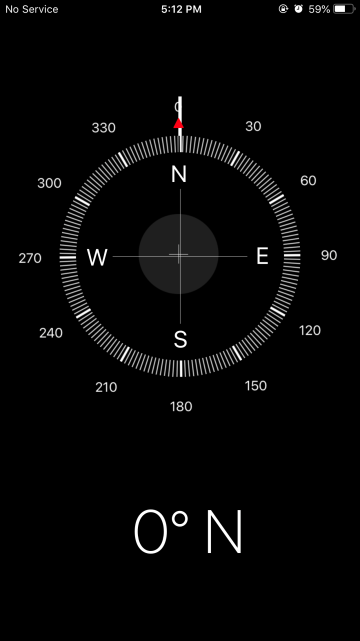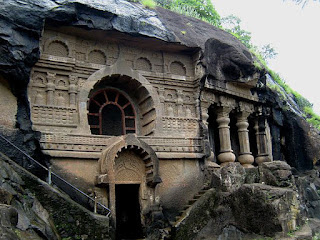Pandav Leni Caves , Vastu examination
Pandvaleni caves of Nasik.
Pandavleni caves are situated in the Indian town of Nashik, in the state of Maharashtra,
the Nearest airport is Mumbai,
the Nearest airport is Mumbai,
The caves are known to have existed from 1st century BCE,(estimated)
From the Perspective of an Energy Analyst.
- Alinda:- corridor or a balcony,
the caves have a balcony or a courtyard in front of the entrance.
This is very auspicious and propitious as per Vedic vastu.
Having a Verandah in front of the house triggers an increase in
health, wealth and general well being.
This is very auspicious and propitious as per Vedic vastu.
Having a Verandah in front of the house triggers an increase in
health, wealth and general well being.
Alinda is discussed in detail in various ancient vastu scriptures,
In Viswa Karma Prakash, chapter 7, there are many verses dedicated to direction,
size and positioning of the Alinda,
In Viswa Karma Prakash, chapter 7, there are many verses dedicated to direction,
size and positioning of the Alinda,
Akoalindstu kartavayo mukhto dakshirden va|
Mukho raajprasadaya dakshinearthvivardhan||
we must make a balcony at the main entrance or the front facade.
if its in front side its good for the king or if on right side its good for increasing the wealth.
we must make a balcony at the main entrance or the front facade.
if its in front side its good for the king or if on right side its good for increasing the wealth.
- Granth Samrangan Sutradhar chapter 20 shloka 11
2) Bramhasthan: Brahmsthan is the central part of the structure,
its mentioned in viswa karma prakash, chapter 7, verse 101,
its mentioned in viswa karma prakash, chapter 7, verse 101,
Bhandenashuchina thdadahchalyena bhasmana thatha |
roga nanavidha shoka jayanthe tatr nityasha ||
Never construct a wall in the middle part of the house,
the middle part is known as brahmasthan ( Lord Brahma's place),
the owner of the house must take all necessary steps
to ensure no metallic objects like screws or nails are used in brahmasthan.
the middle part is known as brahmasthan ( Lord Brahma's place),
the owner of the house must take all necessary steps
to ensure no metallic objects like screws or nails are used in brahmasthan.
Any house with Brahma stan is desecrated with dirt,
ash, or underground debris (shalya), it results in various ailments.
ash, or underground debris (shalya), it results in various ailments.
the centre of all the caves is free of any columns, walls or obstruction.
There was a raised platform in the centre of the courtyard
. It could have been used for the yajna or chanting of mantras.
. It could have been used for the yajna or chanting of mantras.
3) Beds: simpler the better.
Beds must be free of any unwanted material near the bedside.
This was well known by the monks too.
Beds must be free of any unwanted material near the bedside.
This was well known by the monks too.
4) Parikrama(circumambulation): it always good to have free walking space
around the idol or worship relic.
around the idol or worship relic.
5) Entrance: It's very favourable and optimistic to decorate the entrance.
There should not be any kind of vedha(obstruction) in front of the entrance.
vedha means hindrance.there is no Vithi Shula i.e any lane striking or pointing to the house.
There is taru vedha, no tree should be present
in front of the entrance or even its shadow must not fall on the entrance.
There should not be any kind of vedha(obstruction) in front of the entrance.
vedha means hindrance.there is no Vithi Shula i.e any lane striking or pointing to the house.
There is taru vedha, no tree should be present
in front of the entrance or even its shadow must not fall on the entrance.
we find the mention of this in Viswa Karma Prakash, Chapter 7, verse 74
Taruvedham vijaneyaghadi dwarmukhe sththam|
Kumarmarnam sreyam nanarogashch jayate ||
a tree at the entrance of the house creates a defect known as “taru vedh”,
it triggers loss of a young son and condemns the residents with numerous diseases.
it triggers loss of a young son and condemns the residents with numerous diseases.
6) Orientation: we checked on the facing of three Buddhas idols
One exactly facing East, other Northeast and last one North.
They could also match it with Dhruva tara as suggested by few Grathas
for shanku sthapana.(method of determination of direction, using cone emplacement)
One exactly facing East, other Northeast and last one North.
They could also match it with Dhruva tara as suggested by few Grathas
for shanku sthapana.(method of determination of direction, using cone emplacement)
the precise placement and symmetry of the idols strongly point towards
awareness of principles of vastu science amongst the creators of the caves.
awareness of principles of vastu science amongst the creators of the caves.
.
7) mineral deposit: a particular cell was buzzing with energy and I was drawn into it , was pitch dark in there, so we used our
mobile torch to check on the reason and there you go I found
black substance oozing out of the rocks, I touched it but it
was all dried up. I checked other cells but none had this
black substance. Later I realised it was a particular mineral
creeping out from the rocks as it was all volcanic range mountains
this was an interesting finding. That’s why volcanic eruption has
so much energy. It looks like some oil being poured
but I had touched it and the surface was totally dry.
This cell was right next to the Buddha altar so
probably the most important member of the monk
.must have got the chance to stay here.
mobile torch to check on the reason and there you go I found
black substance oozing out of the rocks, I touched it but it
was all dried up. I checked other cells but none had this
black substance. Later I realised it was a particular mineral
creeping out from the rocks as it was all volcanic range mountains
this was an interesting finding. That’s why volcanic eruption has
so much energy. It looks like some oil being poured
but I had touched it and the surface was totally dry.
This cell was right next to the Buddha altar so
probably the most important member of the monk
.must have got the chance to stay here.
8) columns: animal figures play a very important role in the Vedic shastras.
The figures lion, elephants, bull are always placed near a deity or in the palaces.
These animal work on our subconscious mind and gives us good vibes
as we humans have evolved along with the animal kingdom.
The figures lion, elephants, bull are always placed near a deity or in the palaces.
These animal work on our subconscious mind and gives us good vibes
as we humans have evolved along with the animal kingdom.
9) DvarPal( Keeper of the door): a figure is made as a keep guard
before the temple or altar as though protecting the entry of people who enter.
before the temple or altar as though protecting the entry of people who enter.
10) a small pit inside of the hall to store fresh water.
This could have been enhanced with some flowers in it( most probably lotus).
also may have acted as water-cooled chamber during summers.
This could have been enhanced with some flowers in it( most probably lotus).
also may have acted as water-cooled chamber during summers.
11) Columns: as per many Vedic texts an octagonal shape of the column is exemplary,
You can observe some inscriptions as well on the columns.
This was very interesting to see, gave a feeling of Greek architecture.
This probably points towards the presence of Yavanas in these cases,
the inscriptions also seems to be in Ionian script,
You can observe some inscriptions as well on the columns.
This was very interesting to see, gave a feeling of Greek architecture.
This probably points towards the presence of Yavanas in these cases,
the inscriptions also seems to be in Ionian script,
12) Posture: Here most of the Buddha is not in meditative posture
but teaching posture with Dharmachakra mudra. this
suggests the caves might have been a teaching centre for young monks or a monastery.
but teaching posture with Dharmachakra mudra. this
suggests the caves might have been a teaching centre for young monks or a monastery.
13) the caves have few half-finished structures,
in the picture below the steps may have been attempted towards an
higher altar or platform,
in the picture below the steps may have been attempted towards an
higher altar or platform,
a higher platform is normally used by gurus or
teacher for religious or spiritual discourse,
teacher for religious or spiritual discourse,
SUMMARY :
we find very significant and verifiable evidence that maker of
these caves had considered and implemented principles of
vastu and allied sciences, the directional symmetry and
synchronization of energy is clearly visible. the intricate
design elements of gateways and columns convince us
of deep knowledge and study of vastu scriptures during that era,
these caves had considered and implemented principles of
vastu and allied sciences, the directional symmetry and
synchronization of energy is clearly visible. the intricate
design elements of gateways and columns convince us
of deep knowledge and study of vastu scriptures during that era,
furthermore, it can be concluded that vastu is not restricted to
a particular sect or religion, it was widely followed as guiding
theorem for building architecture and alignment of the
structure with the energy of the earth, air, water and sun.
a particular sect or religion, it was widely followed as guiding
theorem for building architecture and alignment of the
structure with the energy of the earth, air, water and sun.
No wonder the structure has lasted for more than 2000 years and counting.


Comments
Post a Comment